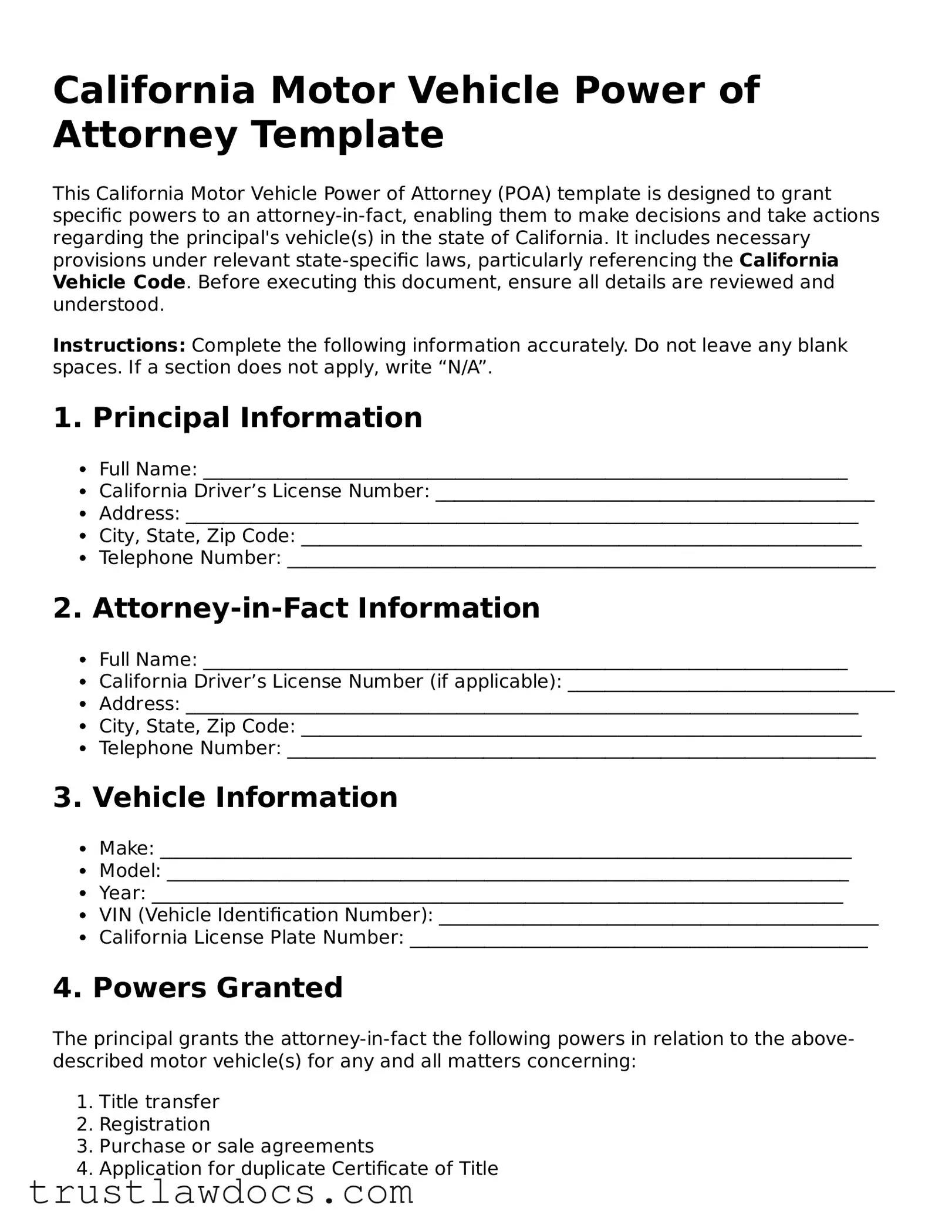California Motor Vehicle Power of Attorney Template
This California Motor Vehicle Power of Attorney (POA) template is designed to grant specific powers to an attorney-in-fact, enabling them to make decisions and take actions regarding the principal's vehicle(s) in the state of California. It includes necessary provisions under relevant state-specific laws, particularly referencing the California Vehicle Code. Before executing this document, ensure all details are reviewed and understood.
Instructions: Complete the following information accurately. Do not leave any blank spaces. If a section does not apply, write “N/A”.
1. Principal Information
- Full Name: _____________________________________________________________________
- California Driver’s License Number: _______________________________________________
- Address: ________________________________________________________________________
- City, State, Zip Code: ____________________________________________________________
- Telephone Number: _______________________________________________________________
2. Attorney-in-Fact Information
- Full Name: _____________________________________________________________________
- California Driver’s License Number (if applicable): ___________________________________
- Address: ________________________________________________________________________
- City, State, Zip Code: ____________________________________________________________
- Telephone Number: _______________________________________________________________
3. Vehicle Information
- Make: __________________________________________________________________________
- Model: _________________________________________________________________________
- Year: __________________________________________________________________________
- VIN (Vehicle Identification Number): _______________________________________________
- California License Plate Number: _________________________________________________
4. Powers Granted
The principal grants the attorney-in-fact the following powers in relation to the above-described motor vehicle(s) for any and all matters concerning:
- Title transfer
- Registration
- Purchase or sale agreements
- Application for duplicate Certificate of Title
- Transaction with the California Department of Motor Vehicles (DMV)
- Receiving and endorsing all relevant documents
5. Term
This Power of Attorney shall become effective on __________________ (date) and, unless sooner revoked, shall remain in effect until __________________ (date).
6. Signatures
This document must be signed by the principal in the presence of a notary public or two witnesses who are not named as attorney-in-fact to ensure its validity and enforceability.
Principal’s Signature: ___________________________________________ Date: ____________
Attorney-in-fact’s Signature: _____________________________________ Date: ____________
Notary Public or Witness(es) Acknowledgment:
State of California
County of ___________________________________
On __________________ (date), before me, ___________________________________________ (name and title of the officer), personally appeared ____________________________________________________, who proved to me on the basis of satisfactory evidence to be the person(s) whose name(s) is/are subscribed to the within instrument, and acknowledged to me that he/she/they executed the same in his/her/their authorized capacity(ies), and that by his/her/their signature(s) on the instrument, the person(s), or the entity upon behalf of which the person(s) acted, executed the instrument.
Witness my hand and official seal.
Signature of Notary Public ____________________________________ Date: _______________
